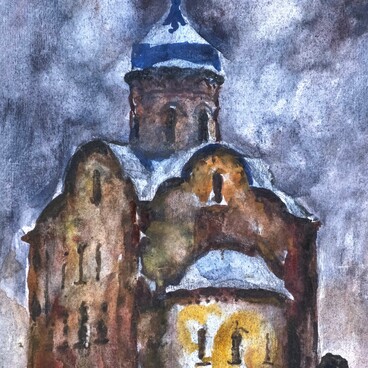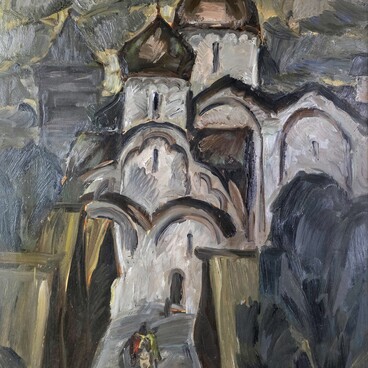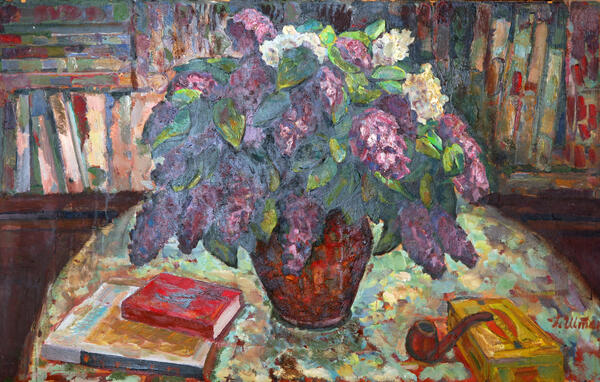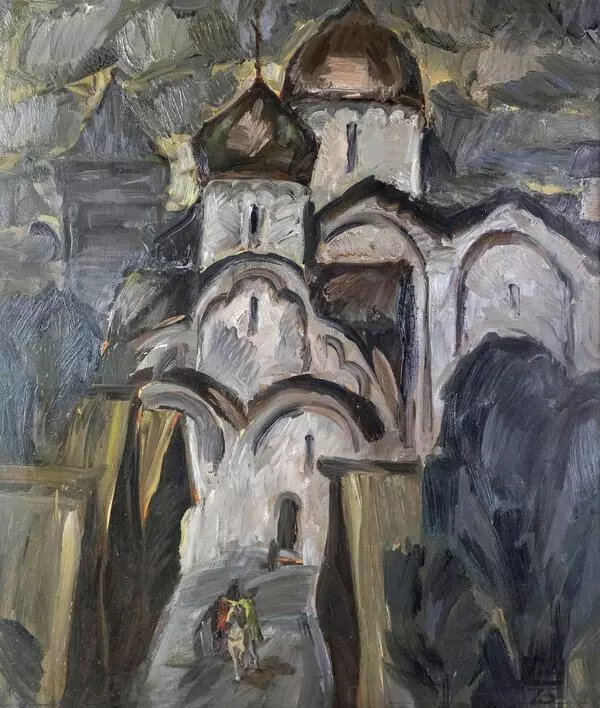Prussian, or Prusskaya Street in the Sophia Side of Novgorod has existed since ancient times. The history of the toponym was revealed in 1914: at the beginning of the First World War, anti-German sentiments arose in Novgorod and part of the population demanded that the street be renamed. Ivan Vasilyevich Anichkov, a member of the Novgorod Society of Antiquity Lovers, spoke in defense of the original name. In his report, he explained that Prussian Street was named not after the Prussians, but after Old Prussians. Once, Old Prussian tribes came to the Novgorod area, fleeing from German expansion, and settled there.
By the late 13th century, Novgorod had been divided into five independent administrative districts called ends. Each end played an equal part in the development of foreign and domestic policy. Representatives of the boyar families from the oldest People’s, Nerevsky and Slavensky Ends enjoyed special authority.
Prussian Street became part of this system quite late, at the end of the 13th century, with the formation of the Zagorodsky End. Nevertheless, it was considered an “aristocratic” street, and the role of its residents in the political life of the city had been undeniable since the 12th century.
By the late 13th century, the boyars of Prussian Street were appointed posadniks, or mayors, 22 times (half of the entire period when the posadnik post was in place). Mikhalko Stepanovich and his son Tverdislav Mikhalkovich became Novgorod posadniks four times.
Under Mikhalko Stepanovich, in 1176, a wooden church of Michael the Archangel was built. In 1219–1224, at the expense of the Prussian boyars, the wooden church was replaced with a stone one. By the second half of the 15th century, it was elevated to cathedral status; 14 nearby churches were attributed to it.
During the years of the Swedish invasion, the church was ruined. In 1685, it was restored and possibly rebuilt. By the mid-19th century, it was deserted again. Under Grand Duke Mikhail Nikolaevich, it became an “artillery” church for several years and received copper bells, silver vessels and an altar cross as a gift from the prince. At the same time, a bell tower was laid, and the church was rebuilt.
The church was seriously damaged during the Second World War and has not survived to this day. Its ruins were examined by Grigory Mikhailovich Shtender. However, it was decided not to restore the church: it was renovated and became a residential building, and later given over to the city’s administration.
The conceptual image of the Church of Michael the Archangel on Prussian Street is reflected only in the presented painting by Grigory Shtender.
By the late 13th century, Novgorod had been divided into five independent administrative districts called ends. Each end played an equal part in the development of foreign and domestic policy. Representatives of the boyar families from the oldest People’s, Nerevsky and Slavensky Ends enjoyed special authority.
Prussian Street became part of this system quite late, at the end of the 13th century, with the formation of the Zagorodsky End. Nevertheless, it was considered an “aristocratic” street, and the role of its residents in the political life of the city had been undeniable since the 12th century.
By the late 13th century, the boyars of Prussian Street were appointed posadniks, or mayors, 22 times (half of the entire period when the posadnik post was in place). Mikhalko Stepanovich and his son Tverdislav Mikhalkovich became Novgorod posadniks four times.
Under Mikhalko Stepanovich, in 1176, a wooden church of Michael the Archangel was built. In 1219–1224, at the expense of the Prussian boyars, the wooden church was replaced with a stone one. By the second half of the 15th century, it was elevated to cathedral status; 14 nearby churches were attributed to it.
During the years of the Swedish invasion, the church was ruined. In 1685, it was restored and possibly rebuilt. By the mid-19th century, it was deserted again. Under Grand Duke Mikhail Nikolaevich, it became an “artillery” church for several years and received copper bells, silver vessels and an altar cross as a gift from the prince. At the same time, a bell tower was laid, and the church was rebuilt.
The church was seriously damaged during the Second World War and has not survived to this day. Its ruins were examined by Grigory Mikhailovich Shtender. However, it was decided not to restore the church: it was renovated and became a residential building, and later given over to the city’s administration.
The conceptual image of the Church of Michael the Archangel on Prussian Street is reflected only in the presented painting by Grigory Shtender.





